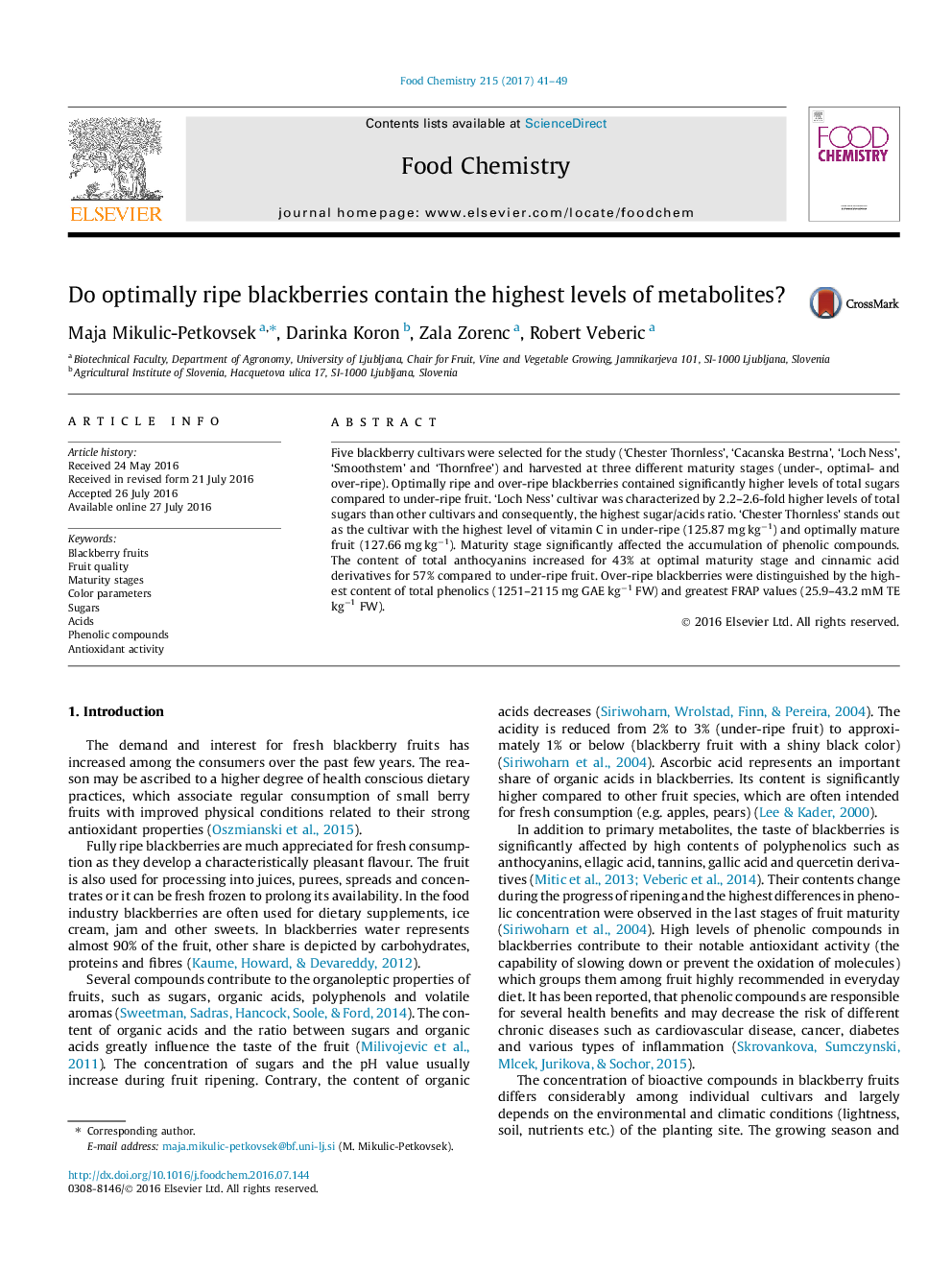| کد مقاله | کد نشریه | سال انتشار | مقاله انگلیسی | نسخه تمام متن |
|---|---|---|---|---|
| 1183705 | 1492077 | 2017 | 9 صفحه PDF | دانلود رایگان |
• Proportion among sugars/organic acids and content of phenolics greatly affect blackberry taste.
• Levels of primary and secondary metabolites could be use for the prediction of blackberry ripeness.
• Optimally ripe or slightly over ripe blackberries contain highest amounts of bioactive compounds.
• Over-ripe blackberries were distinguished by the highest content of TPC and greatest FRAP values.
• Results could be interest for producers and for food and pharmaceutical industry.
Five blackberry cultivars were selected for the study (‘Chester Thornless’, ‘Cacanska Bestrna’, ‘Loch Ness’, ‘Smoothstem’ and ‘Thornfree’) and harvested at three different maturity stages (under-, optimal- and over-ripe). Optimally ripe and over-ripe blackberries contained significantly higher levels of total sugars compared to under-ripe fruit. ‘Loch Ness’ cultivar was characterized by 2.2–2.6-fold higher levels of total sugars than other cultivars and consequently, the highest sugar/acids ratio. ‘Chester Thornless’ stands out as the cultivar with the highest level of vitamin C in under-ripe (125.87 mg kg−1) and optimally mature fruit (127.66 mg kg−1). Maturity stage significantly affected the accumulation of phenolic compounds. The content of total anthocyanins increased for 43% at optimal maturity stage and cinnamic acid derivatives for 57% compared to under-ripe fruit. Over-ripe blackberries were distinguished by the highest content of total phenolics (1251–2115 mg GAE kg−1 FW) and greatest FRAP values (25.9–43.2 mM TE kg−1 FW).
Journal: Food Chemistry - Volume 215, 15 January 2017, Pages 41–49
